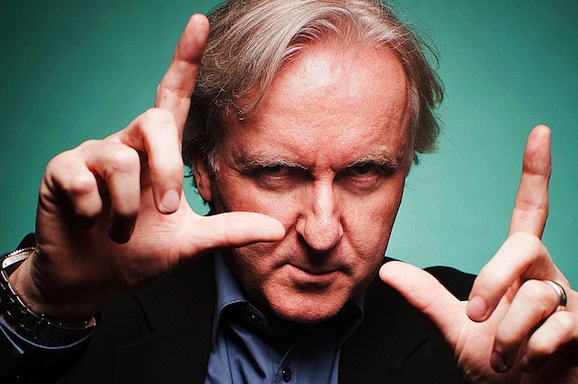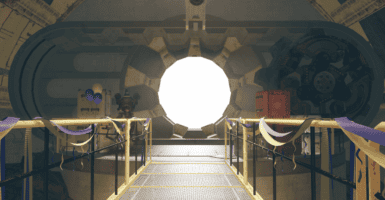James Cameron’s Avatar 2, 3, And 4 Could Be The First To Use Futuristic Technology
This article is more than 2 years old
![]() When James Cameron dropped Avatar back in 2009, it was, as much as anything else, a technological showcase. Regardless of what you think of the rehashed story, we’re talking about a spectacular looking film, one that uses 3D and depth of field like few others before or since. Cameron pushed the boundaries of his cameras and equipment in the first film, and with Avatar 2, 3, and 4 getting closer and closer to becoming a reality, the director could take a similarly trailblazing approach to the sequels.
When James Cameron dropped Avatar back in 2009, it was, as much as anything else, a technological showcase. Regardless of what you think of the rehashed story, we’re talking about a spectacular looking film, one that uses 3D and depth of field like few others before or since. Cameron pushed the boundaries of his cameras and equipment in the first film, and with Avatar 2, 3, and 4 getting closer and closer to becoming a reality, the director could take a similarly trailblazing approach to the sequels.
Cameron took 3D, which has, almost since its inception, been relegated to schlocky horror and gimmick-filled midnight movies, and used it to make something grand and beautiful. He’s also been a big proponent of increased frame rates. As it stands, there’s only been one big time film that’s tried to show in anything but the standard 24-frames-per-second, and that was Peter Jackson’s first Hobbit, which, by all accounts, was a failed experiment (the follow up, The Hobbit: The Desolation of Smaug returned to a more traditional presentation). A report at THR, however, posits that Cameron and Avatar 2 (and Avatar 3 and 4 as they’re all filming together) could use a new technique and technology to leapfrog past that.
Douglas Trumbull has developed a system called MAGI, which not only captures 3D images in 4K, which alone is rather phenomenal, but also displays them at 120 fps, all while using conventional digital projectors. That’s bonkers. For sake of comparison, your standard modern day HD TV has a resolution of 1920×1080, which is pretty good, but 4K is 3840×2160, which, as you can tell from math, is significantly better.
In addition to that, the 120 fps presentation would not only serve this incredible definition, but would eliminate things like strobing, which has been a big issue for many viewers. MAGI shoots 4K at 60 fps, but using alternating shutter speeds, synced up with an alternating left eye/right eye cadence, creates the effect of 120 fps.
Trumbull says, “It delivers extreme fluidity of motion and amazing clarity with no strobing, no double flickering and a viewing experience that far exceeds conventional movie quality.”
While Cameron hasn’t even seen what MAGI can to yet, Trumbull has been talking to Avatar producer Jon Laundau, and they have been trying to arrange a screening of a short film called UFOTOG, which was made to show off just what the system is capable of.
 This sounds like just the sort of technological advance that Cameron might salivate over, but even if he passes on this for the Avatar movies, MAGI could be the future. Trumbull has already talked to the likes of Jackson, and apparently Star Wars: Episode VII director J.J. Abrams has also expressed interest in this new gadget. He definitely has the attention of Hollywood.
This sounds like just the sort of technological advance that Cameron might salivate over, but even if he passes on this for the Avatar movies, MAGI could be the future. Trumbull has already talked to the likes of Jackson, and apparently Star Wars: Episode VII director J.J. Abrams has also expressed interest in this new gadget. He definitely has the attention of Hollywood.
Overall, the film industry, and especially theater chains, have been hesitant to adapt a higher frame rate, not wanting to “upset the apple cart.” But that stance is gradually changing, and this year’s low take at the box office is certainly only going to push things forward as studios and theaters seek to increase ticket sales, and profits, by any means necessary.
One of the biggest complaints about The Hobbit was that the 48 fps projection caused it to look like a video or video game (that was certainly one issue I had with the film, among many others). MAGI apparently avoids this pitfall. Trumbull says, “The Hobbit fell victim to the ‘uncanny valley’. But when you dramatically increase the frame rate to 120 fps you jump over the valley to a whole new territory.”
We’ll have to wait and see if Cameron uses MAGI for Avatar 2, 3, and 4, not to mention if this is indeed the future of movie watching, but it definitely sounds like big changes are on the way. Even if theater owners drag they’re feet, you can’t help but think they’ll get there eventually. Declining profits and ease of distribution have already caused most of the to go completely digital in recent years, and most major studios don’t even distribute film copies of their movies anymore, so it’s not much of a stretch to imagine MAGI, or a similar system, coming to prominence.











